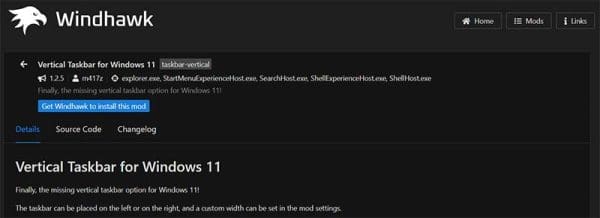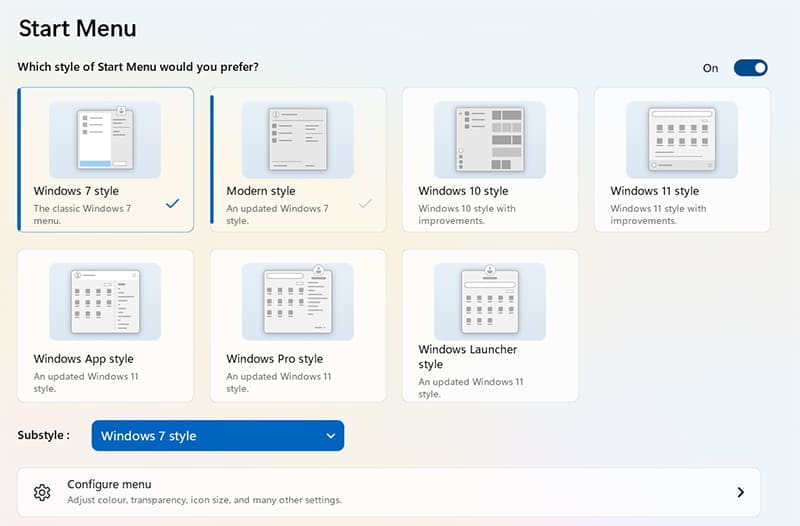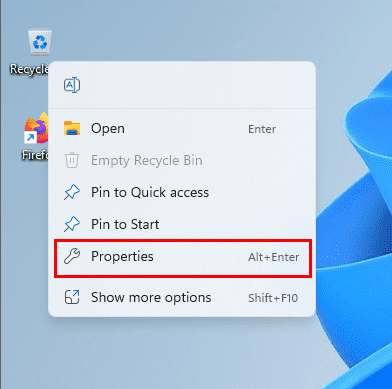Windows 11 macht seit seiner Ankündigung vor einigen Monaten viel Aufsehen. Insider und Betatester haben viel Positives zu berichten und die neue Benutzeroberfläche und Funktionen scheinen zu allen gut zu passen. Daher enthält Windows 11 viele Änderungen an bestehenden Funktionen des Betriebssystems, darunter die neue Windows-Suche. Die Suche ist jetzt umfassender, schneller und effizienter. Wenn Sie die Windows-Suche verwenden möchten, finden Sie hier alles, was Sie darüber wissen müssen. Lass uns anfangen.
Inhalt
Was ist neu in der Windows 11-Suche?
Windows 11 bietet jede Menge Verbesserungen unter der Haube der Suche, jedoch gibt es nicht viele merkliche Änderungen an der äußeren Funktionsweise von Windows Search. Dennoch können Sie sich auf die folgenden neuen Änderungen bei der Windows-Suche freuen.
- Neues Taskleistensymbol
- Dedizierte Dateitypsuche
- Zugängliche Sucheinstellungen über das Startmenü
- Unterstützung für Cloud-Suche in Verbindung mit Cloud-Speicherdiensten
- Umfangreiche Indizierungsoptionen
- Schnellere Ergebnisse
- Effiziente Indizierung bei geringem Akkuverbrauch auf Mobilgeräten
Und mehr. Wenn Sie die Windows-Suche in Windows 11 erkunden, werden Sie in jedem Aspekt der Funktion kleine neue Details finden.
Verwandte: So geben Sie Dateien und Ordner unter Windows 11 frei
Tastenkombination für die Suche in Windows 11

Sie können Windows + Sauf Ihrer Tastatur verwenden, um die Windows-Suche direkt auf Ihrem System aufzurufen. Sie können mit der Eingabe fortfahren, um Ihr System nach relevanten Apps, Dateien und Ordnern zu durchsuchen. Darüber hinaus öffnet das Drücken der Eingabetaste auf Ihrer Tastatur das erste Suchergebnis auf Ihrem PC.
Verwandte: So aktivieren Sie die Virtualisierung im BIOS unter Windows 11 oder 10
So verwenden Sie die Windows-Suche
Sie können die Windows-Suche mit den folgenden Methoden verwenden. Jede Methode hat ihre eigenen Vorteile und Vorteile, sodass Sie je nach gesuchter Datei eine der folgenden Methoden verwenden können.
Drücken Sie die Windows-Taste auf Ihrer Tastatur, um das Startmenü zu öffnen. Sie können auch auf das Symbol in Ihrer Taskleiste klicken.

Geben Sie nach dem Öffnen den Namen der Datei/des Programms ein, nach dem Sie suchen. Die Datei/der Ordner/das Programm sollte automatisch in den Suchergebnissen angezeigt werden. Wenn Ihre Datei nicht oben angezeigt wird, klicken Sie auf eine der folgenden Kategorien, um Ihre Suchergebnisse zu erweitern.

Wenn Sie es gefunden haben, klicken Sie auf das Suchergebnis, um es zu öffnen. Sie können auch auf den Pfeil klicken, um weitere Details dazu anzuzeigen. Und das ist es! Sie haben nun die Windows-Suche aus dem Startmenü verwendet.
Verwandte: So aktualisieren Sie Treiber unter Windows 11
Tastaturkürzel verwenden
Drücken Sie Windows + Sauf Ihrer Tastatur, um die Suche zu öffnen. Wechseln Sie nun bei Bedarf auf den gewünschten Dateityp.

Geben Sie Ihren Suchbegriff ein. Klicken Sie bei Bedarf auf das Textfeld.

Windows sucht nun nach Ihrer Datei/Ihrem Ordner und die Ergebnisse werden auf Ihrem Bildschirm angezeigt. Sie können auf die folgenden Kategorien klicken und sie erweitern, um weitere Ergebnisse anzuzeigen.

Wenn Sie weitere Details zu einer Datei oder einem Programm anzeigen möchten, können Sie auf den Pfeil daneben klicken. Sie haben nun die Windows-Suche mit der Tastenkombination verwendet.
Verwenden des Datei-Explorers
Drücken Sie Windows + Eauf Ihrer Tastatur, um den Datei-Explorer zu öffnen. Navigieren Sie zu dem Laufwerk/Verzeichnis/Ordner, das/die Sie durchsuchen möchten. Klicken Sie nach dem Öffnen auf das Suchfeld in der oberen rechten Ecke Ihres Bildschirms.

Geben Sie jetzt Ihren Suchbegriff ein und drücken Sie die Eingabetaste auf Ihrer Tastatur.

Windows durchsucht nun das aktuelle Verzeichnis nach Ihrem Suchbegriff und zeigt dann alle Ergebnisse auf Ihrem Bildschirm an. Sie können nun auf die Datei klicken und sie starten.

Sie können auch mit der rechten Maustaste darauf klicken und "Dateispeicherort öffnen" auswählen, um das aktuelle Verzeichnis auf Ihrem lokalen Speicher zu besuchen.

Darüber hinaus können Sie die Dropdown-Pfeile oben verwenden, um Ihre Suchergebnisse zu sortieren, um Ihre Datei/Ihren Ordner/Ihr Programm leichter zu finden.

Und das ist es! Sie haben nun die Windows-Suche über den Datei-Explorer verwendet.
So erhöhen Sie die Indizierung für die Windows-Suche
Die Windows-Suche sucht standardmäßig nur in ausgewählten Verzeichnissen und Pfaden nach Dateien und Suchbegriffen. Diese Standardpfade decken die gängigsten Verzeichnisse unter Windows wie das Startmenü, Dokumente, Musik, Bilder und mehr ab. Wenn Sie den Indexierungsumfang unter Windows 11 erhöhen möchten, können Sie die folgende Anleitung verwenden, um loszulegen.
Drücken Sie Windows + iauf Ihrer Tastatur, um die App Einstellungen zu öffnen. Klicken Sie nun links auf „Datenschutz & Sicherheit“.

Klicken Sie rechts auf „Windows durchsuchen“.

Klicken und erweitern Sie "Meine Dateien suchen".

Wählen Sie „Erweitert“.

Wenn Sie nun Ordner von der Indizierung ausschließen möchten, klicken Sie auf „Ausgeschlossenen Ordner hinzufügen“.

Hinweis: Windows hat standardmäßig einige Ordner hinzugefügt. Wir empfehlen, diese Ordner weiterhin auszuschließen, um unnötigen Ressourcenverbrauch für die Indizierung von Systemdateien zu vermeiden.
Nachdem Sie alle Ordner ausgeschlossen haben, können wir jetzt mit der Indizierung aller Ihrer Laufwerke beginnen. Klicken Sie unten auf "Erweiterte Indizierungsoptionen".

Klicken Sie auf „Ändern“.

Aktivieren Sie jetzt die Kontrollkästchen für Ihre Laufwerke.

Klicken Sie auf 'Ok', wenn Sie fertig sind.

Klicken Sie auf 'Schließen'. Und das ist es! Sie haben jetzt Ihre Indexierungsorte in der Windows-Suche erhöht. Wenn Sie einen Laptop verwenden, werden Ihre neuen Standorte indiziert, sobald Ihr Gerät an die Stromversorgung angeschlossen ist.
Verwandte: So erstellen Sie einen Wiederherstellungspunkt in Windows 11
Suchoptionen verwenden
Im Datei-Explorer gibt es seit einiger Zeit Suchwerkzeuge, mit denen Sie Ihre Suchergebnisse viel effizienter verwalten können. Dies kann Ihnen helfen, Dateien zu finden, deren Namen Sie nicht kennen, und sich nur an wenige Details zu erinnern. Die Suchtools wurden in Windows 11 in "Suchoptionen" umbenannt und Sie erhalten jetzt stattdessen ein Dropdown-Menü für Ihre Optionen. Beginnen Sie damit, Ihre Optionen zu erkunden und wie gewohnt im Datei-Explorer nach einem Begriff zu suchen. Sobald Ihre Suchergebnisse angezeigt werden, sollten Sie oben auf dem Bildschirm "Suchoptionen" finden. Verwenden Sie nun die folgenden Optionen, um Ihre Suchergebnisse entsprechend zu filtern.
- Alle Ordner: Durchsuchen Sie alle Ordner im aktuellen Laufwerk/der aktuellen Partition nach Ihrem Suchbegriff.
- Aktueller Ordner: Durchsuchen Sie nur den aktuellen Ordner nach Ihrem Suchbegriff.
Sie können auch bestimmen, wie Ihre Suchergebnisse sortiert werden. Dies kann Ihnen helfen, große Dateien oder Dateien basierend auf Dateitypen zu finden. Verwenden Sie eine der folgenden Optionen
- Änderungsdatum: Verwenden Sie diese Option, um Ihre Ergebnisse nach dem Zeitpunkt zu sortieren, zu dem sie in Ihrem lokalen Speicher erstellt wurden.

- Art: Mit dieser Option können Sie Ihre Dateien nach Art sortieren. Sie können nach Kalenderdateien, Ordnern, Spielen, Bildern, Musik und mehr suchen. Sie können aus über 23 verschiedenen Dateitypen auswählen, um Ihre Suchergebnisse zu sortieren.

- Größe: Verwenden Sie diese Option, um Ihre Dateien nach ihrer Größe zu filtern. Sie erhalten die folgenden Optionen zur Auswahl.

-
- Leer: 0kb
- Winzig: 0kb bis 16kb
- Klein: 16kb bis 1MB
- Mittel: 1 MB bis 128 MB
- Groß: 128 MB bis 1 GB
- Huge: 1GB to 4GB
- Gigantic: Files greater than 4GB in size
Additionally, you get the following more options to filter your search results. These options will dictate where and which files will be searched by Windows. Simply click on the option to activate or deactivate it.
- System files
- Zipped (compressed) folders
- File contents
And that’s how you can use Search Options in Windows 11 to your advantage. We have a few more tips to help you make the most of Windows Search in Windows 11. You can use the section below to get started.
Related: How to Uninstall Apps on Windows 11
Tips to use Windows Search to your advantage
Windows Search has a few certain hidden shortcuts and key terms that can directly help you filter or sort your search results depending on your preferences. Here are a few tips to help you get the most out of Windows Search on Windows 11.
Find large files
You can find large files on a drive or in a folder easily by using the command ‘size:’. You can then use one of the terms from your Search Options to filter your files and display them based on their size. For example, if you wish to search for files larger than 4GB in size in the current directory then you can use the following command.
size:gigantic

Similarly, you can further filter your search results using Search Options to identify large movies, pictures, calendar files, games, or more taking up space on your PC.
Find file types
Similar to the command above, you can use the ‘kind:’ parameter to find certain files in the current directory. The ‘kind’ parameter will allow you to look for calendar files, text documents, pictures, videos games, and more. When using the kind parameter this way you are not restricted to Windows’s predefined categories, instead you can define specific file extensions as well to find them on your PC as shown below.
kind:.exe

The command above will help you look for executables in the current directory.

Similarly using the command below will help you find PDF files in the selected directory.
kind:.pdf

And that’s it! You can use these commands to find certain files on your PC using Windows Search.
Related: How to Hide Badges on Taskbar Icons on Windows 11
Find files by date
You can also use the ‘date:’ parameter to look for files created on a certain date. Additionally, this command can be used in conjunction with Boolean filters below to find files created or modified before or after a certain date on your PC. For example, if looking for a file created on the 1st of January 2020, then you can use the following command below.
date: 1/1/2020

Similarly if looking for a file created on the 1st January 2021, then you can use the following command.
date: 1/1/2021
Use Boolean Filters
Boolean filters can help you search multiple terms simultaneously or in conjunction with each other when using Windows Search. Here are the following Boolean filters that you can use to your advantage.
The ‘AND’ parameter
You can use the AND parameter to search for two search terms together. This way you can look for a file containing both the terms and not either one of them which should help you filter out unwanted results containing either of the terms. For example, if looking for a file containing the words ‘Samsung and ‘galaxy’ in its name then I can use the following term to search for your file.
Samsung AND galaxy

This will filter out files with only ‘Samsung’ and ‘Galaxy’ in their name. Files with either term will be filtered out.
The ‘OR’ parameter
The OR parameter is opposite to the AND parameter and allows you to search for files containing either of the terms in your search term. For example, if I wish to search for files with either ‘Apple’ or ‘Airpods’ in their name, then I can use the following search term.
apple OR airpods

Similarly, if I am looking for PDF and EXE files in a particular directory, then I can use the following command below.
kind:.exe OR .pdf

And that’s how you can use the OR parameter to look for multiple search terms in a single file name.
The ‘NOT’ parameter
If you are looking to filter out a certain search term or a filet type then you can use the NOT parameter. The NOT parameter will exclude the desired file type, kind, size, or name depending on your choice. For example, if in a folder full of .docx files you are looking for other file types and wish to filter them all out, then you can use the following command.
kind: NOT .docx

Similarly, if I am looking for a file that does not have ‘Apple” in its name then I can use the following search term.
NOT apple

Double Quotes
If you remember an exact term for the file that you are searching for then you can use double-quotes. This will force Windows Search to look for the exact search term with the specific formatting and case to find the file that you are looking for. For example, if looking for a file with ‘Apple 2019′ in its title then you can use the following command below.
“Apple 2019”

Parentheses
Parentheses is a Boolean filter that is usually used when you are searching file contents as well. Anything included between the parentheses () is searched for and files with either or all of the terms are displayed on your screen. For example, if looking for a file containing either ‘Apple, Samsung, Mi, Microsoft, and Dell’ or all of these terms, then you can use the following term.
(Apple Samsung Mi Microsoft Dell)

Similarly, you can use the following command if looking for multiple file types.
kind:(.exe .pdf .txt)

And that’s it! You will now have used parentheses to your advantage to look for multiple search terms in a particular file.
‘>’ and ‘<‘>
These two Boolean filters are usually used when looking for file types or when sorting your results based on a parameter. The greater than and less than parameters can be used to filter your results based on a number. For example, if looking for files dated after 1st January 2021 then you can use the following command.
date: >1/1/2021

Similarly, if looking for files less than 10GB then you can use the following command.
size: <>

You can use the greater than and less than parameters to your advantage this way and find the desired files on your system.
Related: How to Type Accents on Windows 11
Are there any Windows search alternatives?
Yes, there are a few Windows search alternatives out there developed by third parties that offer competitive indexing options and promise higher working efficiency when it comes to using your system’s resources. Windows Search, however, would still be our recommended tool for you as it has been installed natively on your system. Using a third-party tool will add additional workload to your PC unless Windows Search has been completely disabled. Hence, we recommend that you try PowerToys by Microsoft first to get a native utility on your PC that uses and enhances Windows Search instead. If that does not work out for you, you can then opt for any one of the third-party utilities listed below.
PowerToys
PowerToys is a collection of enhanced tools by Microsoft that offer you utilities like PowerToys Run (Windows Search), Color Picker, Power Renamer, and more to help increase your productivity and enhance your workflow. PowerToys Run is a spotlight-like search feature in PowerToys that uses Windows Search to index and display files on your PC. PowerToys Run gives you a more elegant way of using Search on your PC. Use the guide below to get you started.
Download and install PowerToys on your PC using the link above. Once installed, launch PowerToys from the taskbar as shown below.

Once PowerToys is launched, we recommend you click on each feature on your left and disable the ones that you don’t wish to use. PowerToys have comprehensive tools that can cause your system to behave unexpectedly if you do not know about them. Hence, disable all the features that you do not need or wish to use on your PC.

Click on ‘PowerToys Run’ on your left.

Enable the toggle at the top.

Set a custom shortcut if needed. By default, you can use Alt + Space to activate PowerToys Run.

Increase the number of search results you wish to view if needed.

Set a position for the search box if you have a multi-monitor setup.

Choose a custom theme if needed.

Additionally, PoweToys Run is highly capable and can help you access apps from within the search box itself. For example, you can enter equations in the search box, and you will automatically get a result from the calculator app as a search result as shown below.

Similarly, you can also execute commands from the search box itself. Ping is a good example that shows up in the search results as shown below.

However, if you are not going to be using these features then there is no point in having them enabled on your PC. Simply disabled the plugins in the PowerToys window as shown below.

And that’s it! You will now have configured PowerToys Run on your system as a Windows Search alternative.
Third-party apps
If PowerToys is not up to mark for you and you are looking for something a bit more comprehensive then you can check out the following Windows Search alternatives below.
We hope you were able to get familiar with Windows Search in Windows 11 using the guide above. If you face any errors or have any questions for us, feel free to reach out using the comments section below.
Can you disable Windows search in Windows 11?
No and yes. Windows does not offer a native way to disable Windows Search. However, this could be detrimental to older systems where Search could end up taking vital resources in the background that would in turn slow your system down. In such cases, and more, you can use a few workarounds to disable Windows Search in the background on Windows 11. You can use the guide below to disable Windows Search on Windows 11.
How to disable Windows search
If you wish to disable Windows Search then disabling the service is the easiest way. Follow the guide below to get you started.
Press Windows + R on your keyboard and type in the following. Press Enter on your keyboard once you are done.
services.msc

Search for a service named ‘Windows Search’ and right-click on it.

Select ‘Properties’.

Click on ‘Stop’.

Click on the drop-down menu and select ‘Disabled’.

Klicken Sie auf 'OK'.

Starten Sie Ihr System neu und Windows Search sollte jetzt auf Ihrem System deaktiviert sein.
Verwandt:



















































































